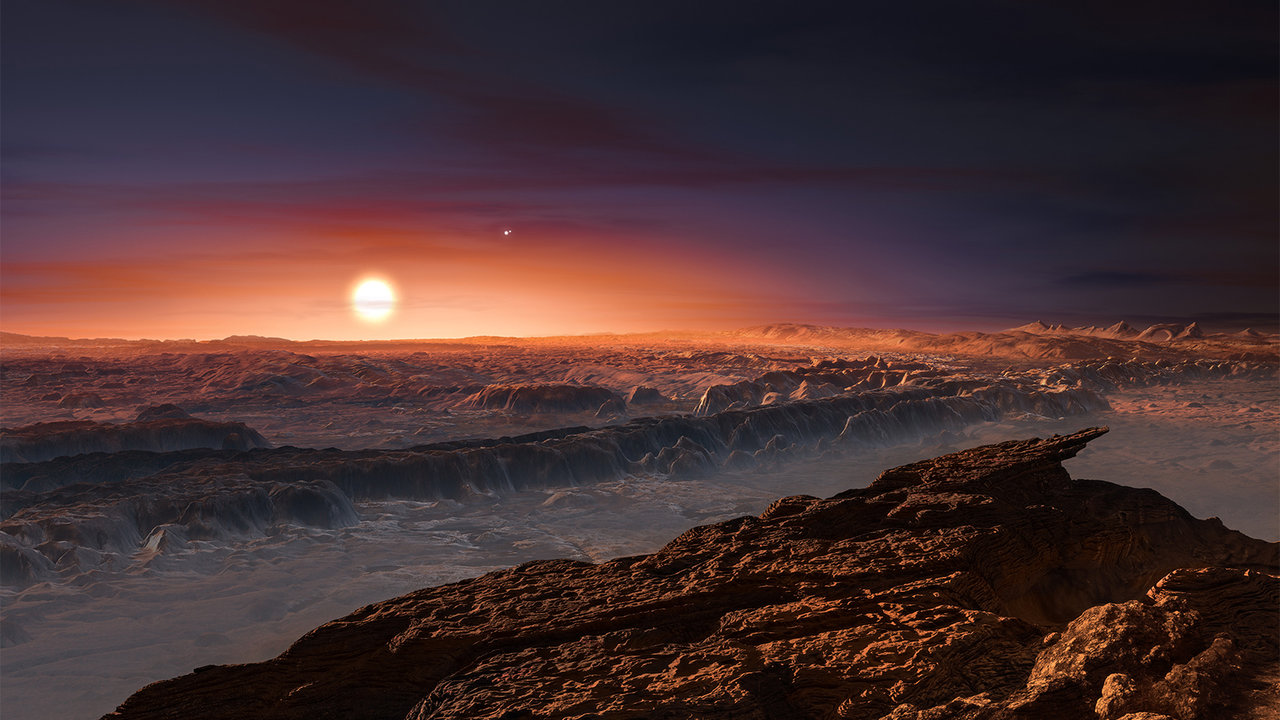This artist’s impression shows a view of the surface of the planetPr oxima b orbiting the red dwarf star Proxima Centauri, the closest starto the solar system. The double star Alpha Centauri AB also appears inthe image. Proxima b is a little more massive than the Earth and orbitsin the habitable zone around Proxima Centauri, where the temperature is suitable for liquid water to exist on its surface.
Credit: ESO/M.Kornmesser
ESO discovers Earth-size planet in habitable zone of nearest star:
Exoplanet Exploration: Planets Beyond our Solar System. Current news,
discoveries, data, and interactive 3-D visualizations of exoplanets from
NASA.
